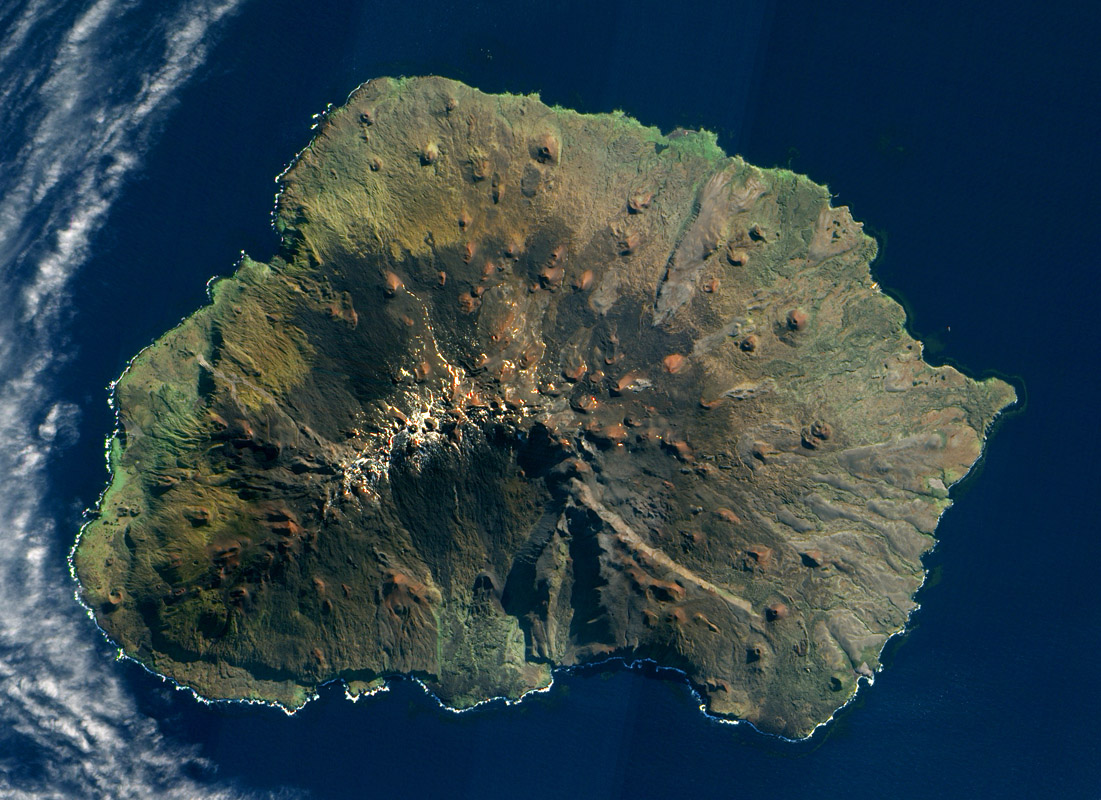October 21, 2009
Not the Moon

image from " rel="nofollow NASA Earth Observatory
Back in the late 1990s I directed " rel="nofollow VolcanoWorld, a NASA-funded website about volcanoes on Earth, and a little about those on other " rel="nofollow planets and moons. Within three years VW was pulling in 4 million visitors/yr and was one of the largest science sites on the web (by comparison LPOD attracts about 1/10 that number, but has no funding nor staff). When I saw this image last night I knew it was too glorious to not use for LPOD. Marion Island is about 19 km wide and 1200 m above sea level, but the volcano rises 5 km above its base on the Southern Indian Ocean sea floor. The entire mountain is a basaltic shield volcano - like those of the Hawaiian Islands - and explosions creating the ruddy-hued cinder cones may have been powered by the interaction of rising magma with seawater. The Moon has a number of shield volcanoes - the domes - but they typically have lower slopes than terrestrial shields. The Moon typically doesn't have cinder cones (volcanic dark halo craters like those in Alphonsus and Atlas are gravity-modified equivalents), but the Marius Hills have three times as many cones as Marion Island. If you check the full res " rel="nofollow version of the image you see a few lava channels, what we call sinuous rilles on the Moon.
" rel="nofollow Chuck Wood
Technical Details
May 5, 2009. EO-1 satellite, Advanced Land Imager (ALI).
Related Links
Check this wide angle " rel="nofollow view showing amazing cloud free zones as the topographic highs of Marion Island and Prince Edward Island block the clouds.



